
|   |

|   |
Sai Nrityotsava 38 - Chittaranjan Mothikhane e-mail: chittaranjanmothikhane@gmail.com July 10, 2012 Dark clouds looming large over Malleshwaram in Bangalore threatening a downpour at the beginning of this year’s monsoon did not deter the art lovers of the area from attending the monthly dance concert at Seva Sadan auditorium on July 1, 2012. Sai Arts International presented its 38th Nrityotsava with dance gurus presenting their confident shishyas, upcoming dancers of tomorrow and established dancers from India and abroad. 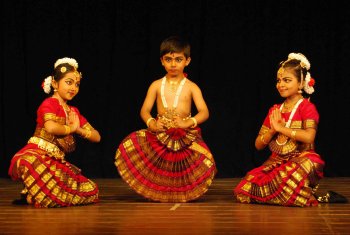 Diya, Darshan, Padma Six talented dancers, all between the age of 6 and 12, confidently smiling, executed the geometry of the Bharatanatyam dance form to perfect stress and extensions. The smartness in selecting the repertoire that befits a presentation like this goes to their mentor Shweta Venkatesh. Without loading them with numbers that demand emotive capabilities, the children performed a Pushpanjali in Valachi raga-adi tala, a Ganesha Stuti followed by Ganesha Kouthvam in Nata raga-chaturashra eka tala and concluded with an Alarippu in tishra jati tala. Manjushree, Diya, Kshamita, Darshan, Shweta D, Padma and Sushma set the evening mood beautifully. 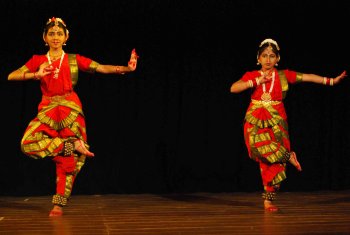 Shweta D, Sushma 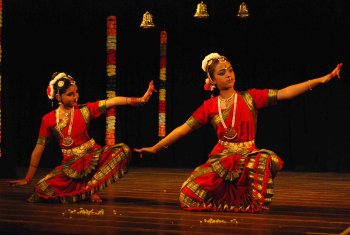 Manjushree, Kshamita Ritwika Ghosh’s rigorous training in Bharatanatyam for 7 years within the portals of Rabindra Bharathi University, Kolkata, showed amply in her dance rendition. Her further training in different aspects of the form under other established gurus in Chennai gave that extra shine to her interpretation of the items. Between the perfunctory Pushpanjali-Ganesha Vandana in Gambhira Natai raga set to adi tala and the signature number Brindavana Saranga Tillana, she explored through Subramanya Bharathiyars’s padam “Chinnanchiru kiliye Kannamma,” how one can have divine relationship with god apart from deity-devotee connection. The tishra jati tala-Ragamalika based rendition saw Ritwika Ghosh at her best in abhinaya when she sometimes became a mother who saw divinity in her child and sometimes as a child who bestowed its mother the pleasure of matru vatsalya. Goddess Parashakti was eulogized through this composition in the form of an effulgent child. 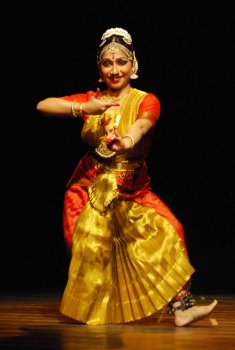 Ritwika Ghosh 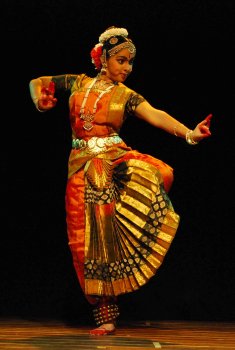 Suhasini B V Suhasini B V presented a Sanskrit composition, a Kanakadasa sahithya and a Tamil devotional number in Bharatanatyam. Her movement across the stage being gracefully fluid and punctuated with nritta where it was absolutely essential was what made her performance attractive. Her choice of three-language repertoire was interesting. An ode to Shiva through Dayananda Saraswathi’s famous lyrics “Bho Shambho”, a devotee’s call to little Krishna through Kanakadasa’s sahithya “Baro Krishnayya” and the bewilderment of the powers of Kali through Muthiah Bhagavatar’s lyrics was aptly translated through her dance technique. She showed her histrionics in the sancharis of Krishna giving darshan to Kanaka and Durga vanquishing Mahishasura. 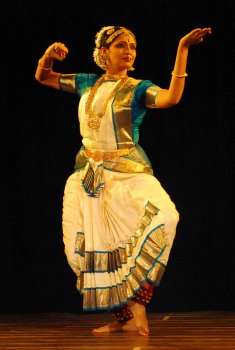 Pallavi Kumar The final segment of Nrityotsava was a Kuchipudi recital by Pallavi Kumar of Houston, USA. Though her selection of often repeated and popular repertoire, Oothukadu Venkata Subbaiyer’s “Marakatha manimaya chela” as a concluding item for the evening drew applause for her dexterous manipulation of her feet while precariously perched on the rim of a brass plate executing the famous tarangam, it was her first two renditions that pleased the viewers more. Dr. M Balamuralikrishna has so wonderfully woven an ode to Ganesha, Maruthi and Krishna in the three pallavis each dedicated to one god. Pallavi performed with verve that Kuchipudi style is known for, also in an equally beautiful octet on Surya. The hasta mudras were not just used to translate the sahithya that was danced, but the same when used in movement brought out the energies that Surya has and exudes for the benefit of all living beings on earth. As for the monsoon rains, it did pour till past midnight. |